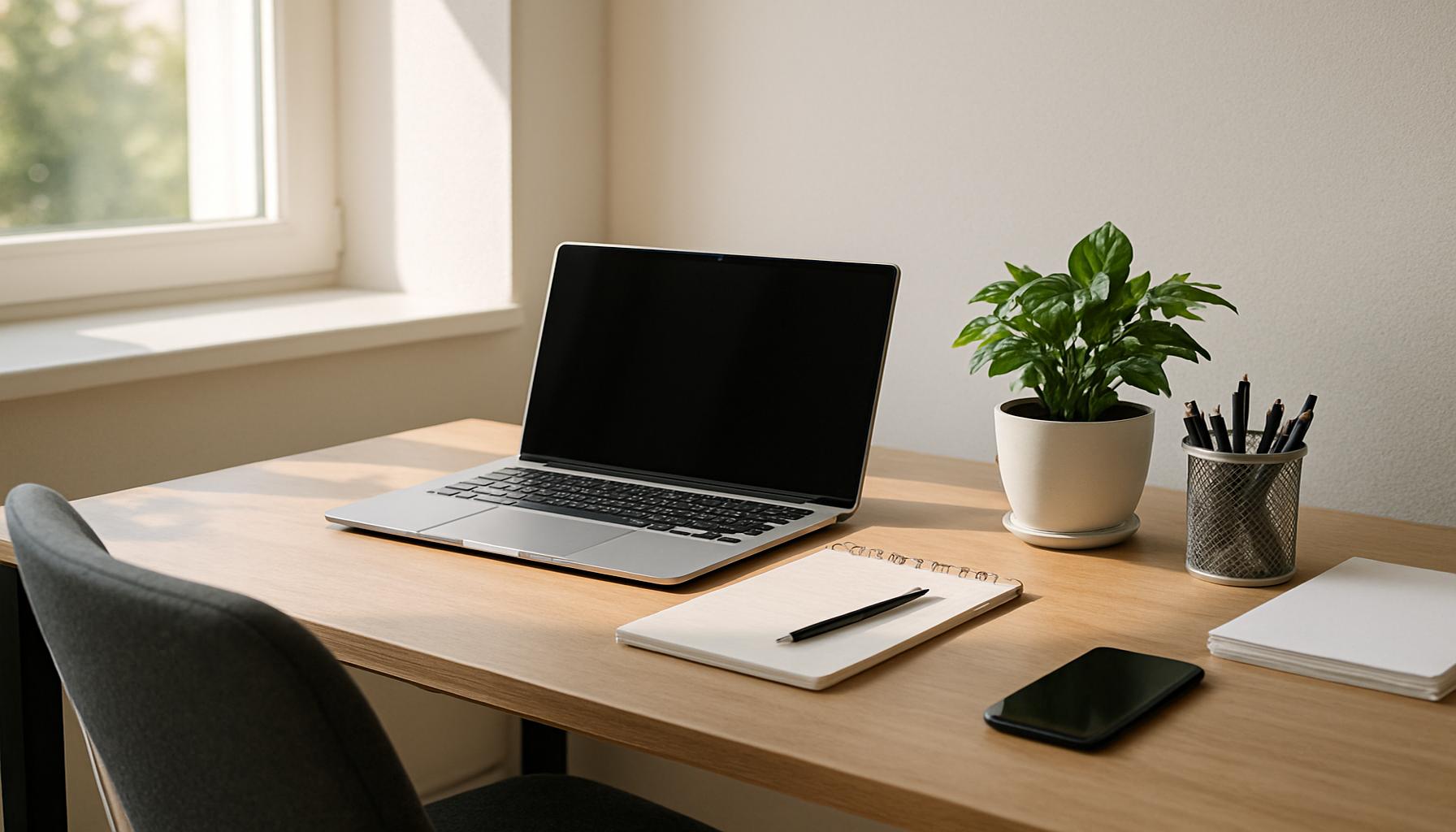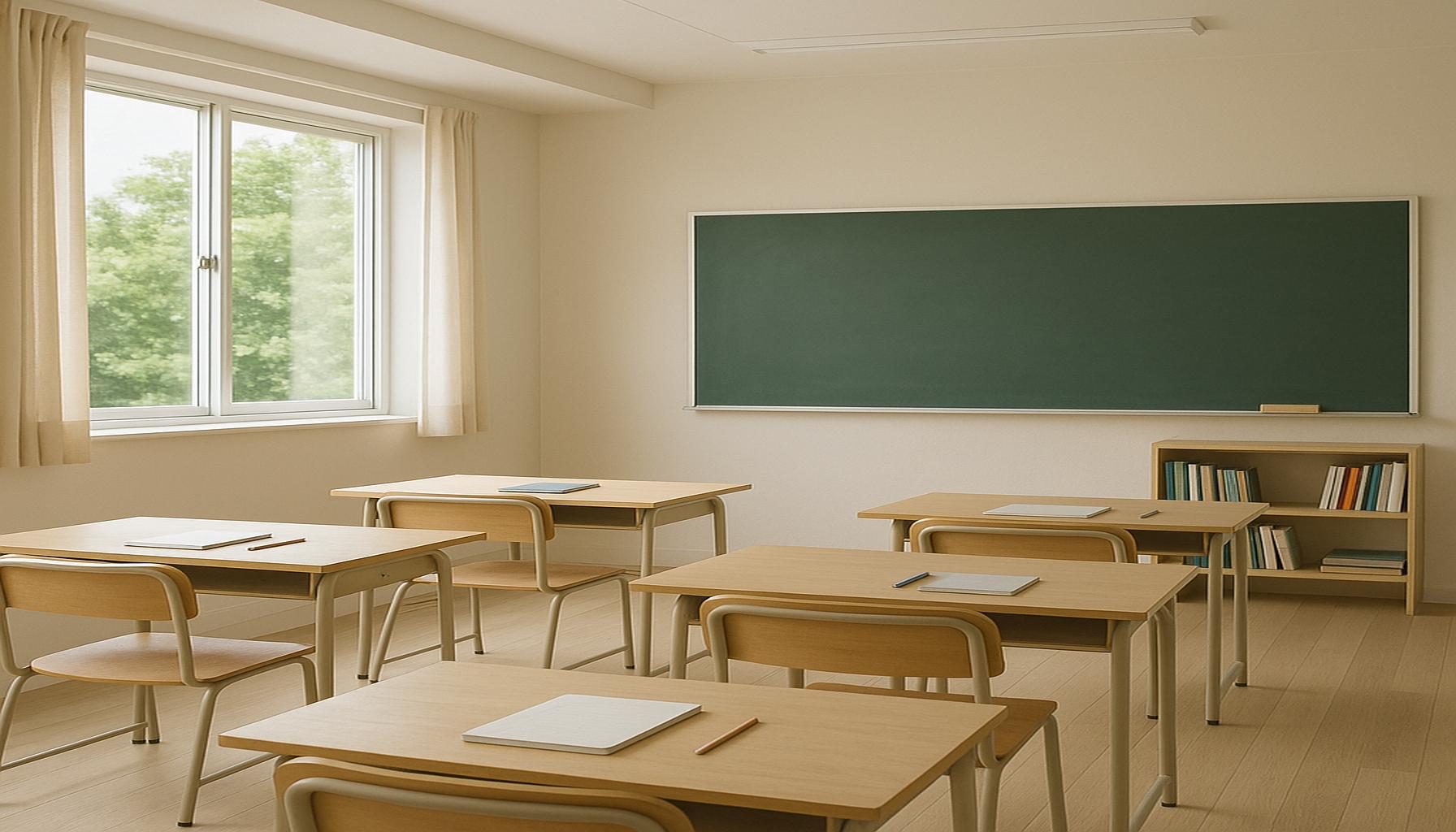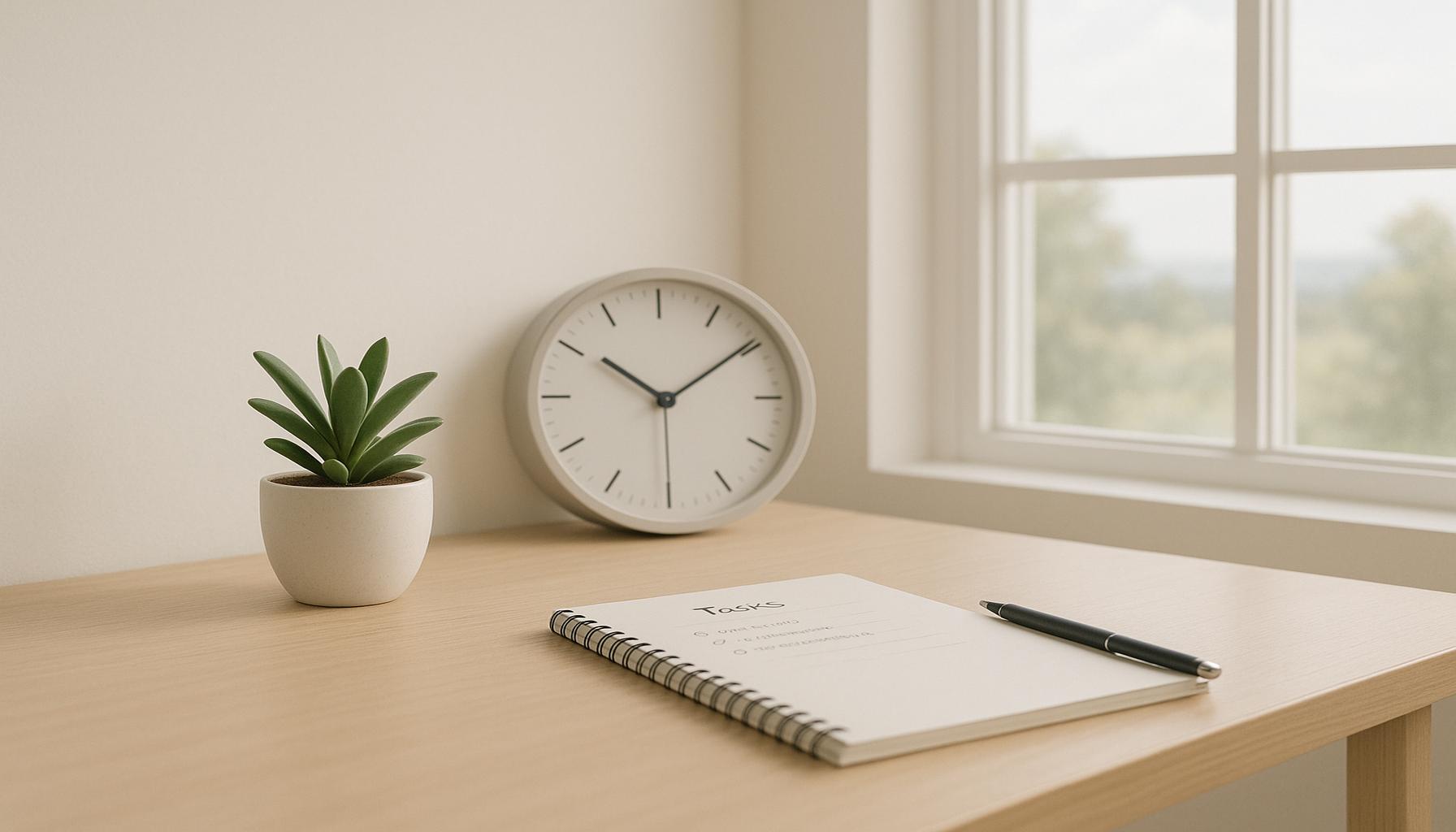Visual Clarity: The Impact of an Organized Space on Personal Productivity

Understanding the Importance of an Organized Space
The environment where we work plays a crucial role in defining our personal productivity. An organized space fosters visual clarity, which in turn enhances focus and efficiency. When we look around our workspaces, whether at home or in a bustling office, the arrangement of our tools and materials can shape our daily experiences significantly. The following aspects contribute to this phenomenon:
- Reduced Clutter: A tidy workspace minimizes distractions and creates a calming atmosphere. Studies show that clutter can lead to decision fatigue, draining mental energy. A clean desk not only looks appealing but also invites a sense of calm. For example, many successful professionals endorse the practice of digital decluttering alongside physical organization, promoting a holistic approach to workspace management.
- Enhanced Focus: Clear surfaces allow for greater concentration on tasks at hand. Tasks become less daunting when the workspace is free of unnecessary items. For instance, a report by the National Institute of Health found that individuals working in clean spaces demonstrated improved focus, completing tasks more efficiently than those in chaotic environments.
- Improved Time Management: Easy access to materials and tools saves precious minutes throughout the day. When everything has a designated spot, the time spent searching for items is drastically reduced. This can be particularly vital in fast-paced settings like tech startups or busy corporate offices, where every second counts.
Moreover, studies indicate that people in organized environments report higher levels of motivation and satisfaction. For instance, over 70% of individuals working in clutter-free spaces express lower stress levels. Research published in the Journal of Environmental Psychology highlights that a well-structured environment can increase job satisfaction and overall well-being. On the other hand, chaotic environments can lead to feelings of overwhelm and confusion, often resulting in decreased performance.
In the fast-paced world of the United States, particularly in bustling cities like New York and San Francisco, the need for a structured workspace becomes even more evident. The constant stimuli and high demand for output in these urban settings can create a pressure cooker environment. Thus, maintaining visual clarity becomes imperative to help professionals tap into their full potential.
As we delve deeper into this topic, we will explore practical strategies to achieve an organized creative space that boosts productivity. For instance, implementing the KonMari method or utilizing digital organizational tools can transform how we interact with our work environments. By enhancing your surroundings, you can unlock new levels of efficiency and creativity, ensuring that your workspace not only serves its purpose but inspires productivity.
DISCOVER MORE: Click here to gain insights on mental clarity and minimalism
Creating a Sanctuary for Focus
To fully appreciate the power of an organized space, it is essential to understand the science behind visual clarity and its profound effects on personal productivity. Research has consistently shown that our surroundings have a measurable impact on our mental states. A well-organized workspace offers a structured environment that enables individuals to harness their cognitive abilities effectively, paving the way for increased output and creativity.
When we think of organization, it encompasses more than just the physical arrangement of items; it is about creating a **sanctuary for focus**. This sanctuary allows for an uninterrupted flow of thoughts and tasks. A recent study conducted by the Princeton University Neuroscience Institute found that clutter negatively affects our ability to focus, impeding our brain’s processing capabilities. In contrast, a neat, organized workspace enhances our ability to concentrate, ultimately leading to better performance.
- Psychological Benefit: A tidy workspace reduces visual noise, leading to lower stress levels and enhanced mood. By eliminating distractions, individuals can prioritize their work and maintain a clear mind to tackle complex tasks efficiently. An organized space gives a sense of control, which is vital in today’s fast-paced world.
- Physical Arrangement: The spatial distribution of tools and materials can greatly affect workflow. For instance, placing frequently used items within arm’s reach can minimize motion and maximize productivity. This thoughtful arrangement transforms the workspace into a functional hub tailored to individual needs.
- Personalization: Infusing personal elements, such as inspiring quotes or creative artwork, can provide motivation without creating clutter. However, it is crucial to strike a balance between personal touches and operational efficiency to keep the space inviting yet purposeful.
Additionally, studies indicate that a well-organized environment fosters a culture of collaboration and communication within teams. In organizations that encourage cleanliness and orderliness, employees report a greater sense of unity and partnership. This team dynamic is essential in high-stake environments, such as marketing firms and financial institutions, where collaboration is key to achieving targets.
As we continue to explore this topic, it is essential to consider how various strategies and tools can support the effective organization of workspaces. Techniques such as the two-minute rule—where tasks that can be completed in two minutes should be done immediately—can help maintain organization levels. Furthermore, integrating digital organizational platforms ensures that both physical and virtual workspaces remain clutter-free and conducive to productivity.
Incorporating these strategies can revolutionize how individuals approach their tasks, paving the way for improved productivity and enhanced creativity. The idea is to create not just a workspace, but a workspace that works for you. The next section will delve deeper into practical methods for achieving and maintaining this desirable state of organization, illustrating how small changes in our environment can lead to significant improvements in our professional lives.
Visual clarity in our workspaces can significantly enhance personal productivity. When a space is organized, it not only clears the physical environment but also paves the way for mental clarity. Research indicates that clutter can lead to distractions, making it challenging to focus on important tasks. By streamlining our workspaces, we can create an atmosphere that fosters creativity and efficient work habits. One effective method to achieve this is by utilizing color coding, which helps categorize items and information visually.
Furthermore, minimalistic design plays a crucial role in cultivating visual clarity. By reducing unnecessary items and opting for functional furniture, individuals can maintain focus and execute their tasks more effectively. There is a profound connection between the aesthetics of a space and an individual’s motivation levels. Bright, well-lit, and spacious areas tend to invigorate employees and promote higher energy levels. Investing in natural lighting and incorporating greenery can also enhance this aspect, creating a sense of calm amidst a busy work life.
Lastly, the psychological effects of a tidy environment cannot be overstated. An organized workspace can lead to a sense of control and positivity, which in turn enhances productivity. By consciously organizing our surroundings, we can cultivate a productive mindset, making it easier to achieve goals and manage workloads with greater efficiency.
| Advantages | Impact on Productivity |
|---|---|
| Enhanced Focus | A clear space minimizes distractions, allowing for improved concentration on tasks. |
| Increased Efficiency | Organized tools and documents enable quicker access and streamlined workflows. |
| Improved Mood | A tidy environment fosters positivity, encouraging motivation and creativity. |
| Better Time Management | Minimizing clutter helps in prioritizing tasks effectively and reduces wasted time finding items. |
DIVE DEEPER: Click here to discover the benefits of minimalism
The Role of Technology in Streamlining Organization
As we delve deeper into the concept of visual clarity and its influence on personal productivity, it becomes increasingly evident that technology plays a pivotal role in facilitating organization and fostering efficiency. In today’s fast-paced environment, where remote and hybrid work models are becoming the norm, leveraging the right tools can significantly aid individuals in achieving a clutter-free workspace, both physical and digital.
Digital tools such as project management software, note-taking applications, and cloud storage solutions help mitigate disarray by centralizing information and streamlining communication. Applications like Trello and Asana enable users to organize tasks visually through boards and lists, which allows for easier tracking and prioritization of projects. This form of organization transcends traditional methods by not only keeping tasks segmented but also ensuring that individuals can update their progress in real-time, reducing the mental clutter often associated with juggling multiple responsibilities.
- Cloud Storage Solutions: Storing documents in the cloud—using services like Google Drive or Dropbox—ensures that files are accessible from anywhere while also allowing for seamless collaboration. This minimizes the chaos of disconnected files and promotes an organized approach to document management.
- Automation Tools: Incorporating tools such as IFTTT (If This Then That) or Zapier can enhance productivity by automating repetitive tasks. By setting up automation flows, individuals can minimize time spent on menial activities, thus maintaining focus on more impactful work.
- Digital Decluttering: Just as physical spaces require regular maintenance, digital environments do too. Implementing strategies like routine file organization, unsubscribing from irrelevant email lists, and periodically deleting unused apps can lead to a clearer digital workspace, which is equally as crucial for productivity.
Furthermore, it is essential to recognize the psychological impact of a visually organized digital space. A study published in the Journal of Environmental Psychology suggests that individuals are more productive when their digital clutter is controlled. A clean desktop or an orderly email inbox can provide a calming effect, reducing anxiety and allowing for more focused work. As we navigate through multiple tasks, visual clarity in our digital environments enables us to maintain a strong sense of direction.
On the personal front, the advent of smart home technology is another realm worth exploring. Devices that allow individuals to control their workspace through voice commands not only enhance productivity but also contribute to a more organized physical environment. For example, smart speakers can manage schedules, remind users of upcoming deadlines, and even control lighting—creating an atmosphere that is conducive to focus and clarity.
Moreover, embracing minimalism in both physical and digital spaces can drastically impact productivity. A minimalist approach encourages individuals to keep only what is essential, stripping away unnecessary items that can lead to distractions. This philosophy aligns with the broader concept of creating a sanctuary for focus—a clean, uncluttered environment that serves to heighten clarity and improve overall output.
In essence, the intersection of technology and organization holds great potential for enhancing personal productivity. By leveraging digital tools and adopting minimalist practices, individuals can cultivate a workspace that not only looks neat but also functions efficiently. As we further explore the dynamics of space organization, it becomes clear that maintaining this structured environment is a continuous journey, influenced by evolving habits, technology, and personal preferences.
DISCOVER MORE: Click here to learn effective strategies
Conclusion
In the evolving landscape of work and personal productivity, the significance of visual clarity in both physical and digital spaces cannot be overstated. As we’ve explored, an organized environment not only enhances focus but also minimizes distractions, thereby unlocking our potential for greater efficiency and creativity. Tools and technologies like project management software, cloud storage, and automation applications empower individuals to maintain clarity in their workspaces, facilitating smoother workflows and more effective collaboration.
Moreover, adopting a minimalist mindset—whether it’s decluttering your desk or organizing your digital files—fosters a sanctuary where productivity thrives. The psychological impact of gazing upon a clear and neatly arranged workspace should not be underestimated; it’s a catalyst for reducing anxiety and enhancing overall well-being. As studies indicate, a clean, organized space inspires not only immediate focus but also long-term motivation.
As we continue to adapt to modern work environments, the importance of creating spaces that support visual clarity becomes increasingly paramount. By cultivating habits that prioritize organization and leveraging modern technologies, individuals can reshape their workflows, enhance personal effectiveness, and ultimately achieve a balance that promotes both success and satisfaction. Embrace the journey toward a more organized life—it’s not just about tidiness; it’s about unlocking your full potential in a world where distraction lurks around every corner.


